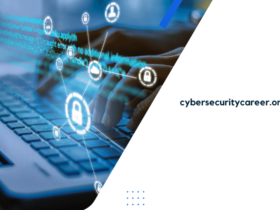Health Care’s Huge Cybersecurity Problem
The healthcare industry has become increasingly dependent on digital technology for storing, sharing, and managing patient data. As such, healthcare organizations need to prioritize cybersecurity to protect the privacy of their patient’s sensitive information from cyber threats. This article will discuss the importance of cybersecurity in the healthcare industry, and the steps health organizations can take to ensure their data is protected from malicious actors.
Cybersecurity in healthcare
The healthcare industry has increasingly relied on technology to improve patient care in recent years. However, this increased reliance on technology has also made the healthcare industry vulnerable to cyberattacks.
According to a report from the Department of Health and Human Services, there were over 1,000 data breaches in the healthcare industry in 2017 alone. These data breaches exposed the sensitive personal information of millions of patients, including their names, birthdates, Social Security numbers, and health records.
Cyberattacks can have a devastating impact on both patients and healthcare providers. In addition to exposing sensitive personal information, cyberattacks can also disrupt the delivery of care, leading to delays in treatment or even cancellations of appointments. In some cases, cyberattacks can even put patient safety at risk.
To combat these threats, healthcare organizations must invest in solid cybersecurity measures. It includes developing robust security policies and procedures, training staff on cybersecurity best practices, and investing in cutting-edge technologies to detect and respond to potential threats. By taking these steps, healthcare organizations can protect themselves – and their patients – from the growing threat of cyberattacks.
The importance of cybersecurity in healthcare
The healthcare industry is one of the most critical industries in the world. It is responsible for the health and well-being of billions of people. As such, the healthcare industry must have robust cybersecurity measures to protect patient data and prevent cyber attacks.
There are several reasons why cybersecurity is so critical in healthcare. First and foremost, healthcare organizations hold a large amount of sensitive data. It includes patient medical records, financial information, and personal data. If this data were to fall into the wrong hands, it is used to blackmail patients or commit fraud.
Secondly, healthcare organizations are often targeted by cybercriminals due to the high value of their data. In 2017, a ransomware attack on a UK hospital led to the cancellation of appointments and operations. The attackers demanded $17,000 worth of Bitcoin to decrypt the hospital’s systems.
Thirdly, cyber attacks can have a severe impact on patient safety. In 2015, hackers gained access to the systems of a Hollywood hospital and demanded ransom payments to restore access. The hospital was forced to divert ambulances to other hospitals, and some patients died as a result.
Fourthly, cyberattacks can have a significant financial impact on healthcare organizations. The WannaCry ransomware attack, which hit NHS hospitals in 2017, is estimated to have cost £92 million ($130 million).
Cybersecurity is, therefore, critical for protecting patient data, preventing cyber attacks, and ensuring the smooth running of healthcare services. Healthcare organizations should take steps to protect their systems with up-to-date security software, secure networks, and robust policies and procedures.
The threats to healthcare cybersecurity
The healthcare industry is under constant threat from cyberattacks. These attacks can come from malware, phishing, and ransomware. They can also come from inside the organization through malicious or accidental insiders.
The most common type of attack is malware. It is where an attacker gains access to a system and then installs malicious software on it. The software is used to steal data, destroy data, or even take control of the system. Phishing is another common type of attack. It is where an attacker sends out emails that appear to be from a legitimate source but are trying to get the recipient to click on a link or open an attachment that will install malware on their system.
Ransomware is an attack that has been on the rise in recent years. It is where an attacker encrypts a victim’s data and demands a ransom be paid to decrypt it. Often, the attacker will threaten to delete the data if the ransom is not paid. Finally, attacks can also come from inside the organization. Malicious insiders are employees or contractors with malicious intent who want to harm the organization. Accidental insiders are employees or contractors who unintentionally cause damage because they do not understand how to appropriately use security systems and data.
Healthcare organizations need to be aware of all these different types of attacks and have adequate defences. Cybersecurity is essential to protecting patient data and ensuring that critical systems are not compromised. It is essential to have policies and procedures that outline how to detect, prevent, and respond to cyberattacks. Investing in security solutions such as intrusion detection systems, firewalls, and antivirus software can significantly reduce the risk of a successful attack.
The problem with healthcare cybersecurity
The problem with healthcare’s cybersecurity is that it must keep up with the times. With the ever-changing landscape of technology, new threats are constantly emerging, and healthcare organizations need to do more to keep up. It was highlighted in the WannaCry ransomware attack earlier this year, which hit many NHS organizations hard.
Cybersecurity is essential for all businesses, but it is especially crucial for healthcare organizations. It is because of the sensitive nature of the data they deal with daily. Patient records contain a wealth of personal information for identity theft or other nefarious purposes if it falls into the wrong hands.
Unfortunately, many healthcare organizations are still using outdated security systems that are no match for today’s sophisticated cyber-attacks. It needs to change urgently, as the stakes are high in protecting patients’ data. Healthcare organizations must invest in modern cybersecurity measures such as next-generation firewalls and endpoint security solutions to help protect their networks from today’s threats.
How hackers are exploiting healthcare’s vulnerabilities
Hackers are exploiting healthcare’s vulnerabilities by targeting its many weak points. These include using outdated and unpatched software, poor password management, and inadequate encryption for data in transit. By taking advantage of these weaknesses, hackers can access sensitive data such as patient records and financial information. It can lead to identity theft, fraud, and other malicious activities.
To protect against these threats, healthcare organizations must invest in solid cybersecurity measures. It includes:
- Regularly updating software and systems.
- Using strong passwords and encryption.
- Training employees to spot and report suspicious activity.
By taking these steps, healthcare organizations can make it much more difficult for hackers to exploit their vulnerabilities.
Steps that healthcare organizations can take to improve their cybersecurity
- Establish a robust cyber security program led by an experienced CISO or CSO.
- Conduct a comprehensive risk assessment to identify vulnerabilities and gaps in your organization’s defences.
- Implement advanced security technologies, such as next-generation firewalls, intrusion detection and prevention systems, and data loss prevention solutions.
- Deploy encryption to protect sensitive data at rest and in transit.
- Educate employees on cyber security best practices and establish strict policies and procedures for handling sensitive data and devices.
- Regularly test your defences with simulated attacks by ethical hackers.
- Plan to respond to a breach quickly and effectively to minimize the damage caused.
The role of the government in healthcare cybersecurity
The healthcare industry is one of the most heavily regulated industries in the United States. The government has a critical role in ensuring that healthcare organizations are taking steps to protect patient data from cyber threats.
The Department of Health and Human Services (HHS) is responsible for implementing and enforcing the HIPAA Security Rule, which establishes national standards for securing electronically protected health information. HHS also guides healthcare organizations on cybersecurity best practices through its Healthcare Cybersecurity Communications and Coordination Center (HC3).
In addition to HHS, the Department of Homeland Security (DHS) also protects the healthcare sector from cyberattacks. DHS offers a range of resources to help healthcare organizations improve their cybersecurity posture, including the Homeland Security Information Network (HSIN), which provides real-time information sharing on cyber threats.
The federal government also works with state and local governments and the private sector to protect against cyber threats to the healthcare industry. For example, the Multi-State Information Sharing and Analysis Center (MS-ISAC) is a collaboration of state governments that share information and resources related to cybersecurity threats.
Healthcare data breaches
In recent years, healthcare data breaches have become increasingly common. In fact, according to a report from the Ponemon Institute, the healthcare industry is now the most targeted industry for cyberattacks.
There are several reasons why healthcare data is such a valuable target for attackers. First, healthcare organizations hold many sensitive data, including patient medical records and financial information. This data can be used to blackmail or extort patients or to commit identity theft.
Second, because many healthcare organizations store and transmit data, it can be relatively easy for attackers to gain access to it. For example, many hospitals still use fax machines to transmit patient medical records, which attackers can intercept. Additionally, many hospitals use outdated software that is not adequately secured, making it easier for attackers to exploit vulnerabilities and gain access to patient’s data.
Finally, even when healthcare organizations take steps to secure their data, they often need more resources and expertise to do so effectively. It leaves them vulnerable to sophisticated attacks that can easily bypass their defences.
As the number of cyberattacks against healthcare organizations continues, these organizations must improve their cybersecurity practices. However, this will require significant investment in both money and time. In the meantime, patients should remain vigilant about protecting their personal information and be aware of the risks posed by sharing their data with healthcare organizations.
What makes cybersecurity challenging within the healthcare field?
A few key factors make cybersecurity particularly challenging within the healthcare field:
- Healthcare organizations must deal with a vast and ever-growing amount of sensitive patient data. This data is often spread across various systems and devices, making it difficult to keep track of and secure.
- Many healthcare organizations still use outdated technology, making them more vulnerable to attacks.
- The complex nature of the healthcare industry makes it challenging to develop comprehensive security protocols that cover all potential risks.
Cybersecurity solutions for the healthcare industry
Healthcare organizations are constantly attacked by cyber criminals looking to exploit vulnerabilities to gain access to sensitive patient data. To combat these threats, healthcare organizations must implement robust cybersecurity solutions to detect and prevent attacks.
One of the most effective cybersecurity solutions for the healthcare industry is a next-generation firewall (NGFW). NGFWs use artificial intelligence and machine learning to analyze traffic and identify malicious activity. They can also block known malware and phishing attempts and prevent unauthorized access to networks.
Another essential solution for healthcare organizations is a robust endpoint security solution. This solution helps protect devices that connect to the network, such as laptops, smartphones, and printers. It can detect and block malware and provide real-time protection against new threats.
In addition to NGFWs and endpoint security solutions, healthcare organizations should also consider implementing user behavior’s analytics (UBA). UBA uses machine learning to analyze user behavior’s and identify unusual activity that could be indicative of a cyber attack. By identifying malicious activity early, UBA can help to prevent data breaches and minimize the damage caused by an attack.
Conclusion
Cybersecurity in the healthcare industry is an important issue that needs to be addressed urgently. With the rising prevalence of cyber threats, healthcare organizations must take steps towards enhancing their cybersecurity protocols and safeguarding patient data. By implementing measures such as encryption, multifactor authentication, and intrusion detection systems, organizations can ensure a secure environment for both patients and staff. In addition, investing in training programs will help employees stay on top of emerging cyber threats so they can identify potential security risks before they become real problems.









Leave a Reply